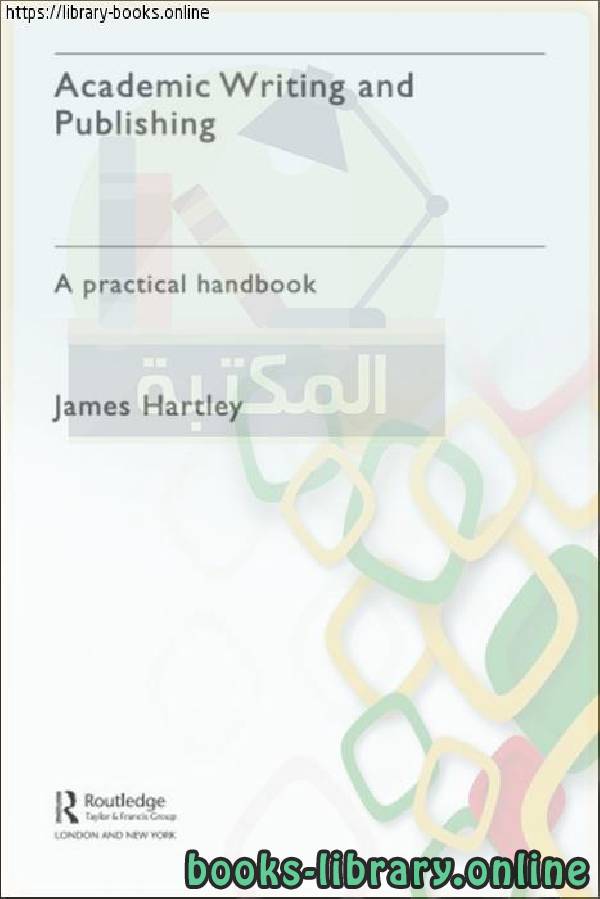📘 قراءة كتاب Academic Writing and Publishing أونلاين


CLARITY IN SCIENTIFIC WRITING
In my view, following this sort of advice obscures rather than clarifies the
text. Indeed, Smyth has rather softened his views with the passage of time
(see Smyth, 2004). For me, the views expressed by Fowler and Fowler in
1906, which head this chapter, seem more appropriate. Consider, for example,
the following piece by Watson and Crick, announcing their discovery of the
structure of DNA, written in 1953. Note how this text contravenes almost
all of Smyth’s strictures cited above:
We wish to suggest a structure for the salt of deoxyribose nucleic acids
(D.N.A.). This structure has novel features which are of considerable
biological interest.
A structure for nucleic acid has already been proposed by Pauling
and Corey. They kindly made their manuscript available to us in advance
of publication. Their model consists of three inter-twined chains, with
the phosphates near the fibre axis, and the bases on the outside. In our
opinion this structure is unsatisfactory for two reasons: (1) We believe
that the material which gives the X-ray diagrams is the salt, not the
free acid. Without the acidic hydrogen atoms it is not clear what forces
would hold the structure together, especially as the negatively charged
phosphates near the axis will repel each other. (2) Some of the van der
Waals distances appear too small.
Another three-chain structure has also been suggested by Fraser (in
the press). In his model the phosphates are on the outside and the bases
on the inside, linked together by hydrogen bonds. This structure as
described is rather ill-defined, and for this reason we shall not comment
on it.
(Opening paragraphs from Watson and Crick, 1953,
pp. 737–8, reproduced with permission from James D.
Watson and Macmillan Publishers Ltd)
Table 1.1.1 lists some of the comments that different people have made
about academic text. Some consider that academic writing is spare, dull and
undistinguished. Some consider that articles in prestigious journals will be
more difficult to read than articles in less-respected journals ones because of
وضوح في الكتابة العلمية
من وجهة نظري ، فإن اتباع هذا النوع من النصائح يحجب بدلاً من توضيح
نص. في الواقع ، لقد خفف سميث وجهات نظره مع مرور الوقت
(انظر سميث ، 2004). بالنسبة لي ، وجهات النظر التي أعرب عنها فاولر وفولر في
1906 ، التي ترأس هذا الفصل ، يبدو أكثر ملاءمة. النظر ، على سبيل المثال ،
قطعة التالية من قبل واتسون وكريك ، معلنا اكتشافهم لل
هيكل الحمض النووي ، وكتب في عام 1953. لاحظ كيف يتعارض هذا النص تقريبا
جميع قيود سميث المذكورة أعلاه:
نود أن نقترح بنية لملح الأحماض النووية deoxyribose
(الحمض النووي.). يحتوي هذا الهيكل على ميزات جديدة ذات أهمية كبيرة
مصلحة بيولوجية.
وقد تم بالفعل اقتراح هيكل للحمض النووي من قبل بولينج
وكوري. تفضلوا بإتاحة مخطوطهم لنا مقدماً
للنشر. نموذجهم يتكون من ثلاث سلاسل بين التوأم ، مع
الفوسفات بالقرب من محور الألياف ، والقواعد من الخارج. في منطقتنا
رأي هذا الهيكل غير مرض لسببين: (1) نعتقد
أن المواد التي تعطي مخططات الأشعة السينية هي الملح وليس
خال من الحموضه. بدون ذرات الهيدروجين الحمضية ، من غير الواضح ما هي القوى
من شأنه أن يعقد الهيكل معًا ، خاصة وأن المشحون سالبًا
سوف الفوسفات بالقرب من المحور صد بعضها البعض. (2) بعض من فان دير
المسافات الطويلة تبدو صغيرة جدًا
كما اقترح هيكل آخر من ثلاث سلاسل من قبل فريزر (في
الصحافة). في نموذجه الفوسفات موجودة في الخارج والقواعد
من الداخل ، مرتبطة ببعضها البعض بواسطة روابط الهيدروجين. هذا الهيكل كما
الموصوفة غير محددة إلى حد ما ، ولهذا السبب يجب علينا ألا نعلق
عليه.
(فقرات افتتاحية من واتسون وكريك ، 1953 ،
ص. 737-8 ، مستنسخ بإذن من جيمس د.
واتسون وماكميلان للنشر المحدودة
يسرد الجدول 1.1.1 بعض التعليقات التي أدلى بها أشخاص مختلفون
حول النص الأكاديمي. يعتبر البعض أن الكتابة الأكاديمية هي قطع الغيار ، مملة و
غير مميز. يعتبر البعض أن المقالات في المجلات المرموقة ستكون
أكثر صعوبة في القراءة من المقالات في المجلات الأقل احتراما بسبب
الكتابة الأكاديمية pdf
قواعد الكتابه الاكاديميه
سنة النشر : 2008م / 1429هـ .
نوع الكتاب : pdf.
عداد القراءة:
اذا اعجبك الكتاب فضلاً اضغط على أعجبني و يمكنك تحميله من هنا:

شكرًا لمساهمتكم
شكراً لمساهمتكم معنا في الإرتقاء بمستوى المكتبة ، يمكنكم االتبليغ عن اخطاء او سوء اختيار للكتب وتصنيفها ومحتواها ، أو كتاب يُمنع نشره ، او محمي بحقوق طبع ونشر ، فضلاً قم بالتبليغ عن الكتاب المُخالف:
 قبل تحميل الكتاب ..
قبل تحميل الكتاب ..
يجب ان يتوفر لديكم برنامج تشغيل وقراءة ملفات pdf
يمكن تحميلة من هنا 'http://get.adobe.com/reader/'


 منصّة المكتبة
منصّة المكتبة 